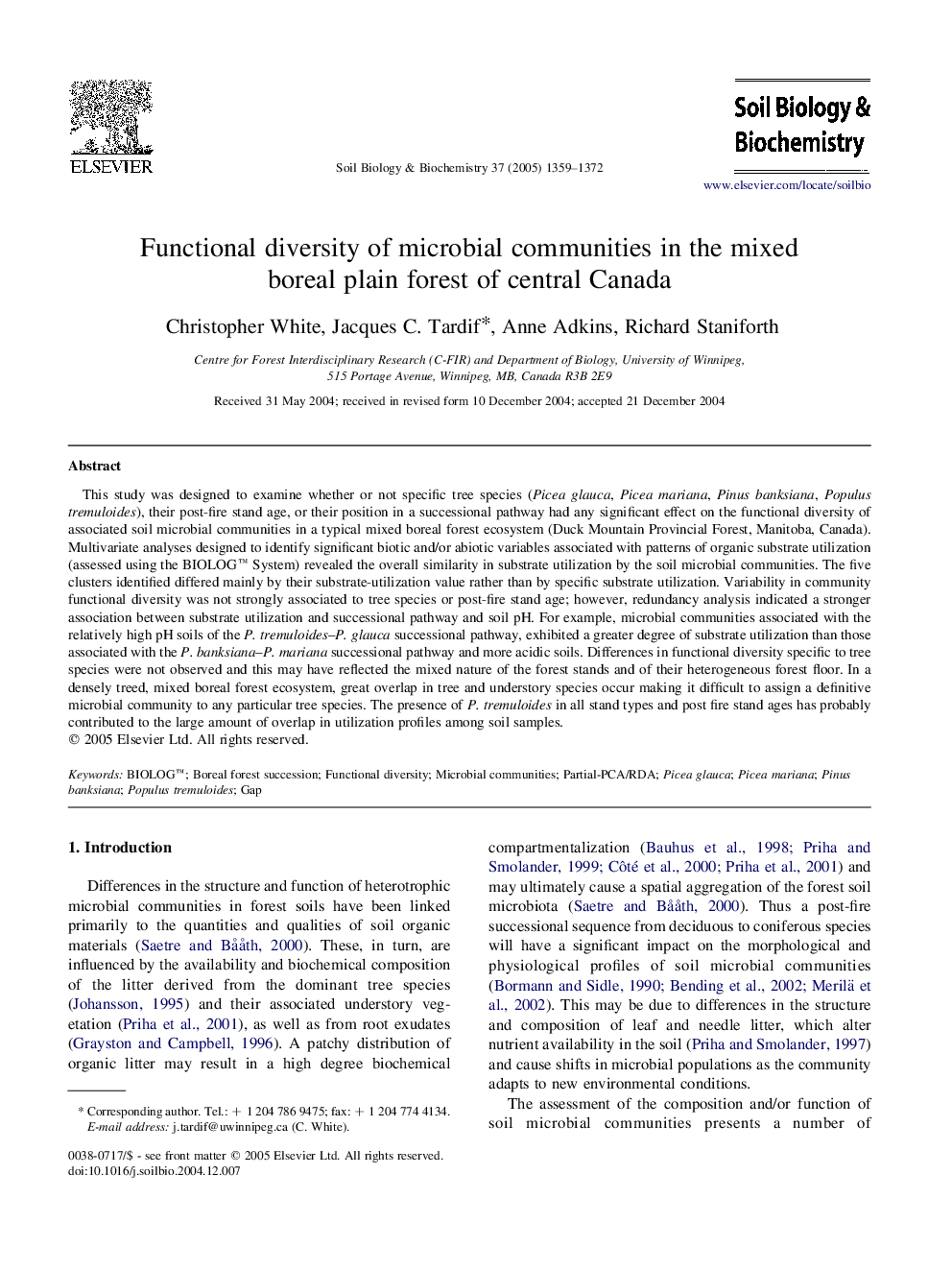| کد مقاله | کد نشریه | سال انتشار | مقاله انگلیسی | نسخه تمام متن |
|---|---|---|---|---|
| 10846156 | 1070038 | 2005 | 14 صفحه PDF | دانلود رایگان |
عنوان انگلیسی مقاله ISI
Functional diversity of microbial communities in the mixed boreal plain forest of central Canada
دانلود مقاله + سفارش ترجمه
دانلود مقاله ISI انگلیسی
رایگان برای ایرانیان
کلمات کلیدی
موضوعات مرتبط
علوم زیستی و بیوفناوری
علوم کشاورزی و بیولوژیک
دانش خاک شناسی
پیش نمایش صفحه اول مقاله

چکیده انگلیسی
This study was designed to examine whether or not specific tree species (Picea glauca, Picea mariana, Pinus banksiana, Populus tremuloides), their post-fire stand age, or their position in a successional pathway had any significant effect on the functional diversity of associated soil microbial communities in a typical mixed boreal forest ecosystem (Duck Mountain Provincial Forest, Manitoba, Canada). Multivariate analyses designed to identify significant biotic and/or abiotic variables associated with patterns of organic substrate utilization (assessed using the BIOLOG⢠System) revealed the overall similarity in substrate utilization by the soil microbial communities. The five clusters identified differed mainly by their substrate-utilization value rather than by specific substrate utilization. Variability in community functional diversity was not strongly associated to tree species or post-fire stand age; however, redundancy analysis indicated a stronger association between substrate utilization and successional pathway and soil pH. For example, microbial communities associated with the relatively high pH soils of the P. tremuloides-P. glauca successional pathway, exhibited a greater degree of substrate utilization than those associated with the P. banksiana-P. mariana successional pathway and more acidic soils. Differences in functional diversity specific to tree species were not observed and this may have reflected the mixed nature of the forest stands and of their heterogeneous forest floor. In a densely treed, mixed boreal forest ecosystem, great overlap in tree and understory species occur making it difficult to assign a definitive microbial community to any particular tree species. The presence of P. tremuloides in all stand types and post fire stand ages has probably contributed to the large amount of overlap in utilization profiles among soil samples.
ناشر
Database: Elsevier - ScienceDirect (ساینس دایرکت)
Journal: Soil Biology and Biochemistry - Volume 37, Issue 7, July 2005, Pages 1359-1372
Journal: Soil Biology and Biochemistry - Volume 37, Issue 7, July 2005, Pages 1359-1372
نویسندگان
Christopher White, Jacques C. Tardif, Anne Adkins, Richard Staniforth,